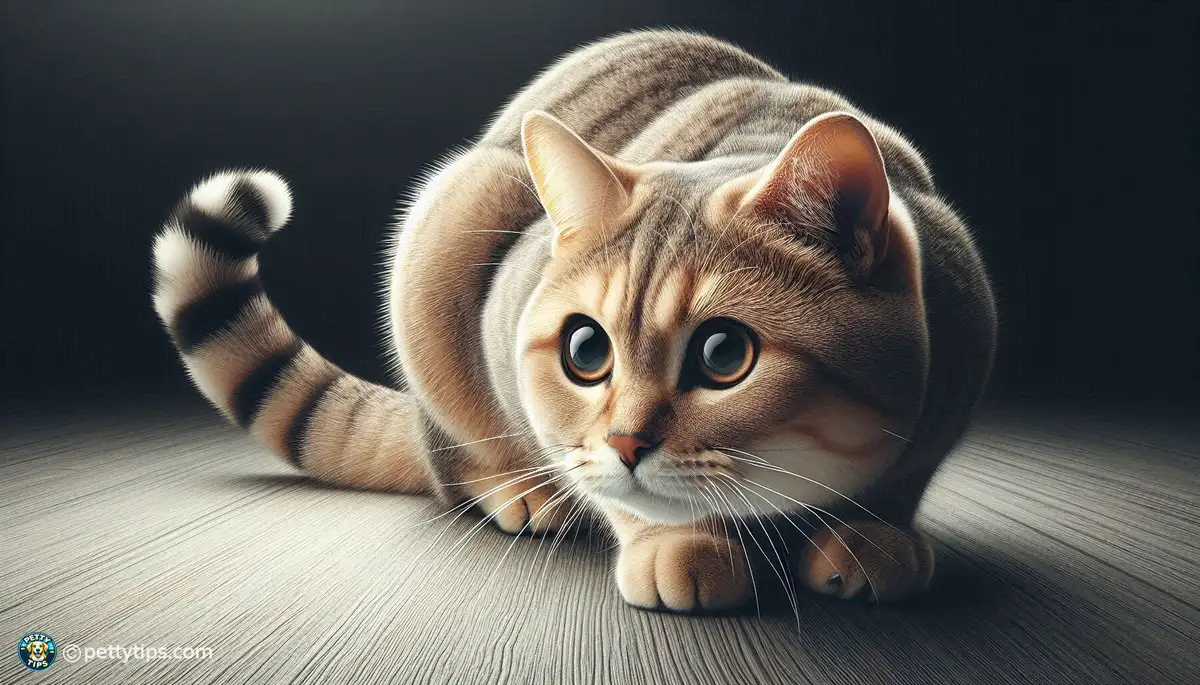
Uncovering the Impact of Stress on Cat Litter Box Behavior
Chiara Rinaldi - Sep 22, 2024 - 7 min read


Understanding prey drive in cats is essential for every pet owner. Prey drive is an instinctual behavior deeply ingrained in cats, stemming from their days in the wild. It's what drives them to stalk, chase, and pounce on objects that mimic prey. This behavior is not a sign of aggression or malice; rather, it's a natural part of being a cat.
To comprehend your feline friend's behavior better, it's crucial to recognize where their prey drive comes from. In the wild, cats are hunters, relying on their instincts to survive. This predatory behavior is hardwired into their DNA, passed down through generations of felines. Even though domestic cats may not need to hunt for food, their innate instincts remain intact.
One of the most noticeable signs of prey drive in cats is their stalking behavior. You may observe your cat crouching low to the ground, eyes fixed on a target, ready to pounce at any moment. This behavior mimics how they would stalk prey in the wild, showing their hunting instincts are still very much present.
Another common indicator of prey drive is when your cat engages in chasing objects around the house. Whether it's a toy mouse or a piece of string, cats with a strong prey drive will eagerly pursue and "hunt" these items, exhibiting their natural hunting instincts.
Recognizing your cat's prey drive is crucial for providing them with adequate mental stimulation. Without outlets for their hunting instincts, cats can become bored and restless, leading to destructive behavior. Providing interactive toys and engaging play sessions can help satisfy their innate desires to hunt and chase.
Creating an environment that caters to your feline companion's natural instincts is essential for their overall well-being. Introducing climbing structures, hiding spots, and puzzle feeders can simulate the hunting experience and keep your cat mentally stimulated and physically active.
While it's natural for cats to exhibit prey drive, it's essential to redirect this behavior appropriately. Instead of discouraging hunting instincts altogether, provide alternative outlets for your cat to express their innate desires. Interactive toys and puzzle feeders can offer a safe and constructive way for your cat to satisfy their hunting instincts.
When engaging in play sessions with your cat, always supervise to ensure their safety and well-being. Encourage interactive play with toys that mimic prey, but be mindful of your cat's limitations and avoid overstimulation. By participating in playtime with your cat, you can strengthen your bond while providing them with the mental and physical stimulation they need.
It's essential to recognize that not all cats have the same level of prey drive. While some may exhibit strong hunting instincts, others may show less interest in chasing and stalking behavior. Understanding your cat's individual preferences and temperament will help tailor their environment and play experiences to suit their needs effectively.
As a responsible pet owner, it's crucial to respect your cat's boundaries and comfort levels. While engaging in play, be attentive to your cat's body language and cues. If they show signs of stress or discomfort, give them space and adjust your interactions accordingly. building trust and mutual respect is key to nurturing a positive relationship with your feline companion.
If you're concerned about your cat's prey drive or are experiencing challenges managing their behavior, seeking guidance from a professional behaviorist or veterinarian can be beneficial. These experts can provide personalized advice and strategies to address specific issues and enhance your cat's quality of life.
In some cases, excessive or erratic prey drive may be indicative of underlying health issues or behavioral problems. Consulting with a veterinarian can help rule out any medical concerns and determine the best course of action for managing your cat's behavior effectively.
Understanding and recognizing your feline companion's prey drive is essential for fostering a happy and fulfilling relationship. By acknowledging their natural instincts and providing appropriate outlets for expression, you can enrich their lives and strengthen the bond you share. Remember to respect your cat's individuality and seek professional guidance when needed to ensure they thrive both mentally and physically.